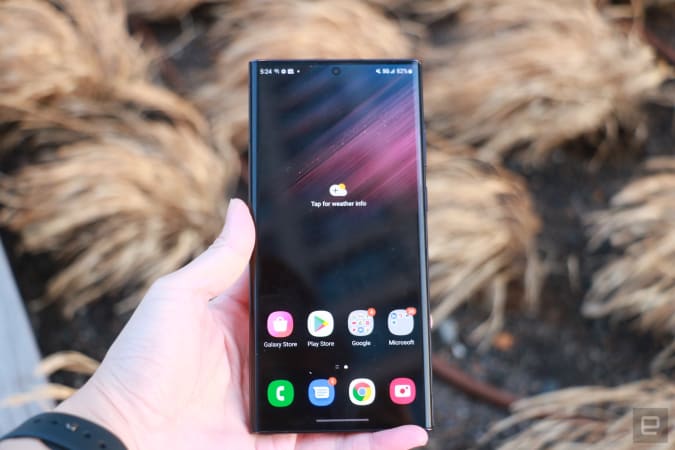An excellent phone that’s as advanced as it is familiar.
The S22 Ultra is, for all intents and purposes, a new Galaxy Note. It has the same rectangular silhouette, the same onboard S Pen and the same list of top-tier specs. With the S22 Ultra, Samsung is introducing a more mainstream audience to the S Pen that’s long been the hallmark of the Note series. By merging the two lines, Samsung is consolidating its top-tier products, bringing together the most popular features across its portfolio. That’s not to say there’s nothing new about the S22 Ultra — Samsung brought updated camera, display and software features this year as well.
It’s strange to review a phone that’s supposed to be new, but feels so familiar. If you’ve been missing the Note series, that familiarity will be welcome. But for those simply considering a new Galaxy S flagship, the S Pen alone won’t be enough of an upgrade. Thankfully, though, Samsung promises display and camera improvements that might make the S22 Ultra even better than its predecessor.
The difference between the S22 Ultra and last year’s model starts with their design. The S22 Ultra is pretty much a Note 20 Ultra clone, which makes it a departure from the S21 Ultra’s rounder silhouette. With the same rectangular shape, curved edges and matte brushed metal finish, the two handsets look and feel almost identical. The S Pen slot is even in the same location at the left side of the bottom edge. If I didn’t give you the exact dimensions, you probably wouldn’t even be able to tell that the S22 Ultra is slightly wider, shorter and thicker than the Note. You might notice, though, that the S22 Ultra is about 21 grams (or 0.74 ounces) heavier.
The phone weighs more than the Pixel 6 Pro, too, though the iPhone 13 Pro Max still beats it at 240 grams. Google’s premium flagship already reminded me of the Note 20 Ultra, aside from its colorful two-tone design and camera bar. Instead of a rectangular module at the top left corner housing the array of sensors, the S22 Ultra’s cameras are neatly laid out in two columns on the back with no boundaries containing them. I prefer this streamlined, less cluttered look to the Note 20 and S21 Ultra’s versions.
I also appreciated the S22 Ultra’s Gorilla Glass Victus+ covering, especially after it fell from the top of a cabinet and survived without a scratch. I was somewhat disappointed that the review unit I received was the boring black version, not one of the other three color options. If I were shopping for myself, I’d choose either the green or burgundy, which I got to see in person at a recent Samsung hands-on event.
Display and audio
As is usually the case with Samsung's devices, the S22 Ultra's screen is sumptuous. Its 6.8-inch Super AMOLED panel is colorful, bright and easy to read in the sun, thanks to its peak brightness of 1,750 nits. Like previous Galaxy flagships, the S22 Ultra also refreshes at 120Hz, making for a smooth scrolling experience.

To ensure users can see what's on their phones regardless of the lighting conditions, Samsung this year introduced what it's calling "Vision Booster." The feature is meant to kick in when it detects you're in direct sunlight or in super dim environments, adjusting not only the display brightness but also its color and contrast. You'll need to have adaptive brightness on for it to work.
I didn't notice much of a difference when I was playing Two Dots in bed one night, even when I pulled up the same scene on my Pixel 6 Pro to compare. Samsung says the effect is more noticeable in sunlight, but I still didn’t observe a significant difference as the sun shone on the S22 Ultra’s screen when I made my way to the office. Perhaps this is something where the effect is so subtle that it’s hard to notice, but I never had trouble reading things on the S22 Ultra, regardless of the lighting around me.
I don’t generally play music through my phone, but one night when my WiFi went out and I couldn’t use my speakers, I had to resort to streaming Spotify on the S22 Ultra and it provided decent audio quality. It was loud enough to deliver the background noise I was looking for, though songs like Heartbreaker by Wabisabi sounded hollow and were lacking in bass. It was, however, better at handling mid-heavy sounds like the audio cues for games like Two Dots.
Post a Comment